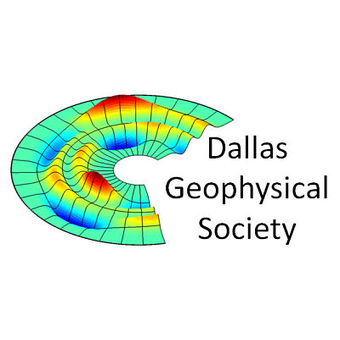Dallas Geophysical Society Luncheon - November 2017
Event Details
Date: Thursday, November 16, 2017
Time: 11:30 am - 1:00 pm
Location: Denbury Resources, 5320 Legacy Dr, Plano, TX
Topic: Multi-Seismic Attributes Analysis and Production Integration in Unconventional Plays - Workflow and A Case Study
Speaker: Renjun Wen
Bio: Renjun Wen is the founder of Geomodeling Technology Corp, an international geosciences software company in Calgary, Canada. He holds a PhD in Petroleum Geology from Norwegian University of Science and Technology (NTNU), Norway (1995), and a Bsc in Petroleum Geology from Jianhan Petroleum Institute, China (1983). From 1983 to 1987, he worked as an exploration geologist in CNPC. He worked for Statoil Research Center as a research consultant and this work, together with his post-Dr. research, formed the basis to found Geomodeling in later 1996 when he moved to Calgary, Canada. He has published papers in the fields of reservoir modeling, sub-seismic fault modeling, geostatistical application in image processing, and seismic attribute analysis. Since 2000, Dr. Wen has collaborated with major international oil companies to develop innovative reservoir modeling software in the SBED consortium. He is a registered Professional Geologist in Alberta (APEGGA), and members of SEG, CSEG, CSPG, AAPG, SPE, EAGE, and IAMG.
Abstract: A key question to be addressed in applying seismic attribute analysis to the exploration and exploitation of shale and tight sand plays is whether the analysis can help explain the large variability of production among horizontal wells in the same play. The 80 to 20 “rule” is often observed in these plays, whereas about 80% of the production is contributed by 20% of the wells. Even though the advancement in well completion and horizontal drilling technologies are major factors for the success of shale and tight-sand plays, variability of rock properties in the plays are believed to key contributors to the production variability. The questions are: what are these rock properties that are controlling the variation of the production and is it feasible to map the spatial variation of the key properties before drilling.
This talk will present two lines of thought in developing seismic attribute analysis workflows to map high productivity areas (sweet-spots) in shale and tight-sand reservoirs. The first line of thought is a prospecting workflow that is based on model-based attributes. The second line of thought is a forensic workflow that is based on data integration. A case study of applying these two workflows in a shale gas play will illustrate the strength and weakness in each workflow.
In the prospecting attribute analysis workflow, we rely on seismic attributes that have clear physical meanings, which can be linked to rock properties through physical models. There are a variety of rock properties that are regarded as influential to the productivity of shale and tight-sand plays, such as total carbon content, in-situ porosity and permeability, content of brittle minerals, in-situ fracture density and orientation, local stress field, etc. To map these rock properties, a variety of seismic inversion algorithms have been used to link these rock properties and geomechanical properties, notably, Poisson ratio, Young’s modulus, fracture density and orientation, and “brittleness” or “fracability” attributes. In principle, analyzing these seismic inversion attributes should lead to mapping of “sweet-spot” before drilling, such as in areas of high fracability. The challenges in the prospective attribute workflow is that how to calibrate these physical attributes. I’ll use the data in a case study to illustrate pitfalls of using these inversion attributes.
In the forensic attribute analysis workflow, we integrate all available seismic attributes with production, drilling and completion data. We do not assume any direct link between any seismic attribute and rock properties or production potential. Instead, we rely on historic production data in the reservoir to reveal if there is any relationship between production data and seismic attributes. The analysis of such a type of relationship must also consider the influence of drilling and completion parameters. We found that a neural-network derived non-linear relationship often perform better than multi-variate linear regression. No single attribute is found to be able explain the spatial variability of the production. But an integrated attribute through non-linear neural networks clearly show patterns of sweet-spots that are consistent with the drilling results.
Combining both types of seismic attribute analysis workflows discussed above is a more pragmatic approach in practice. Using these workflows together can help in reducing the uncertainty of mapping “sweet-spot” and increase well productivity.

When
Location
- Denbury Resources, 5320 Legacy Dr, Plano, TX 75024, USA


